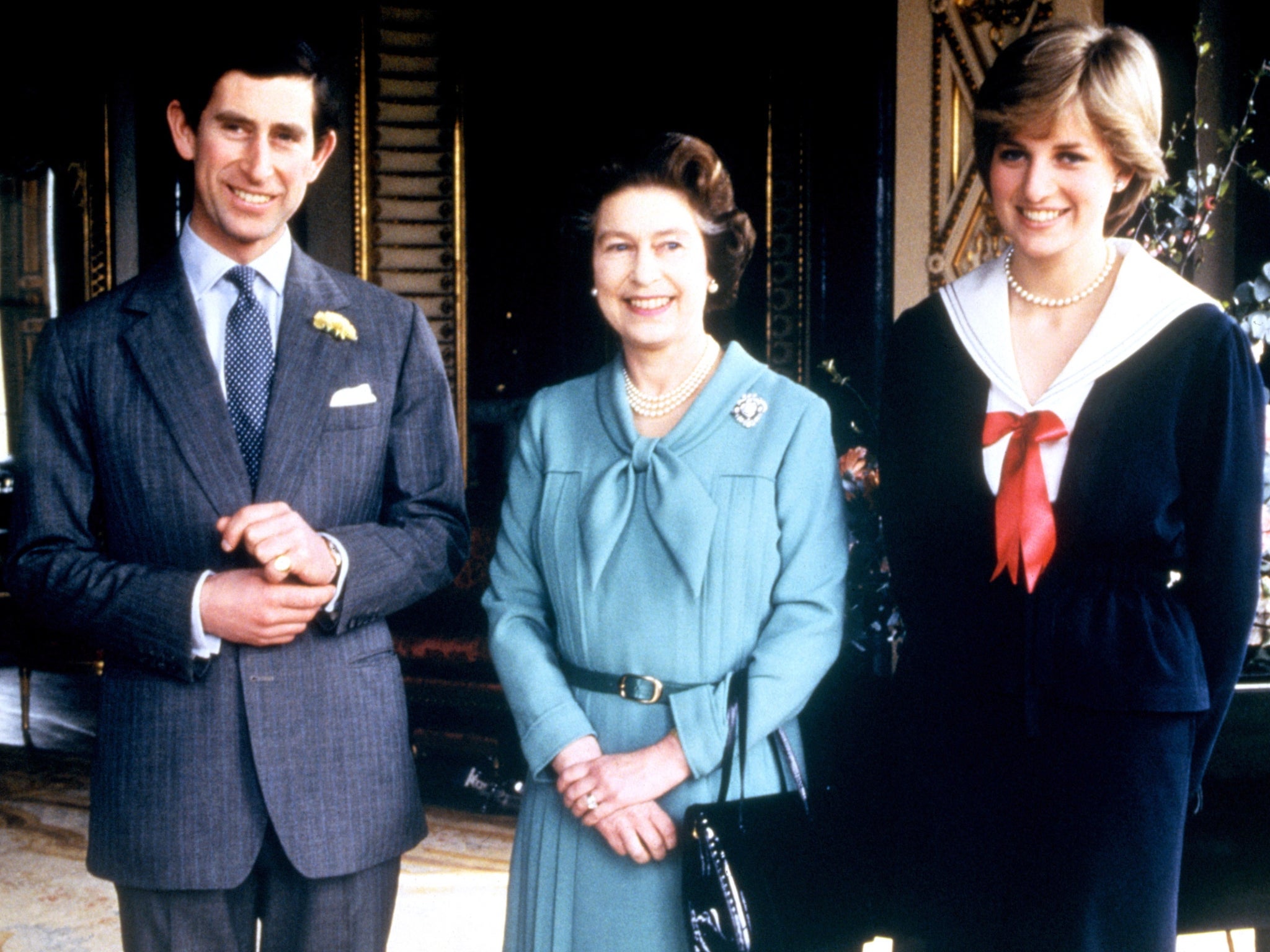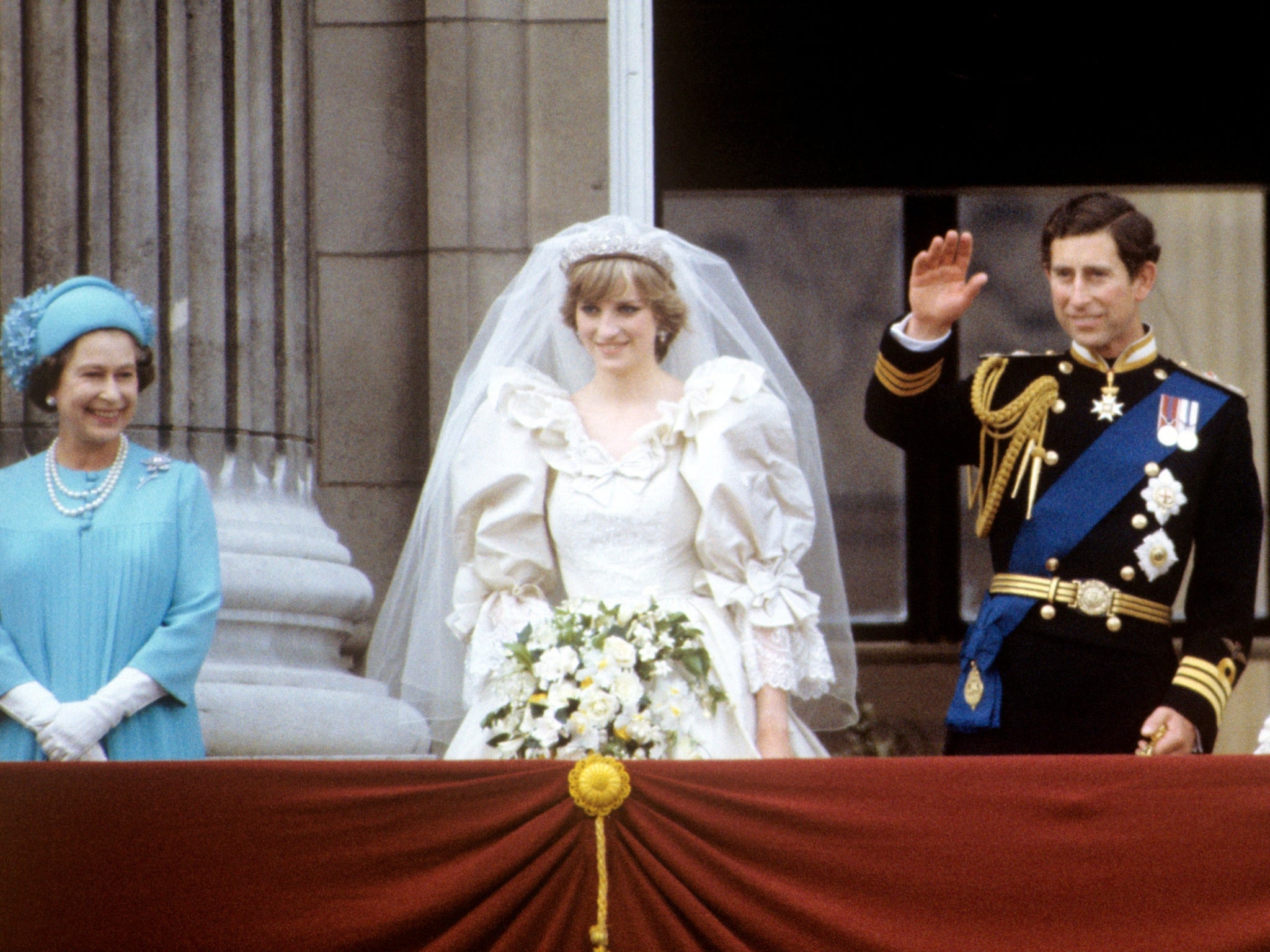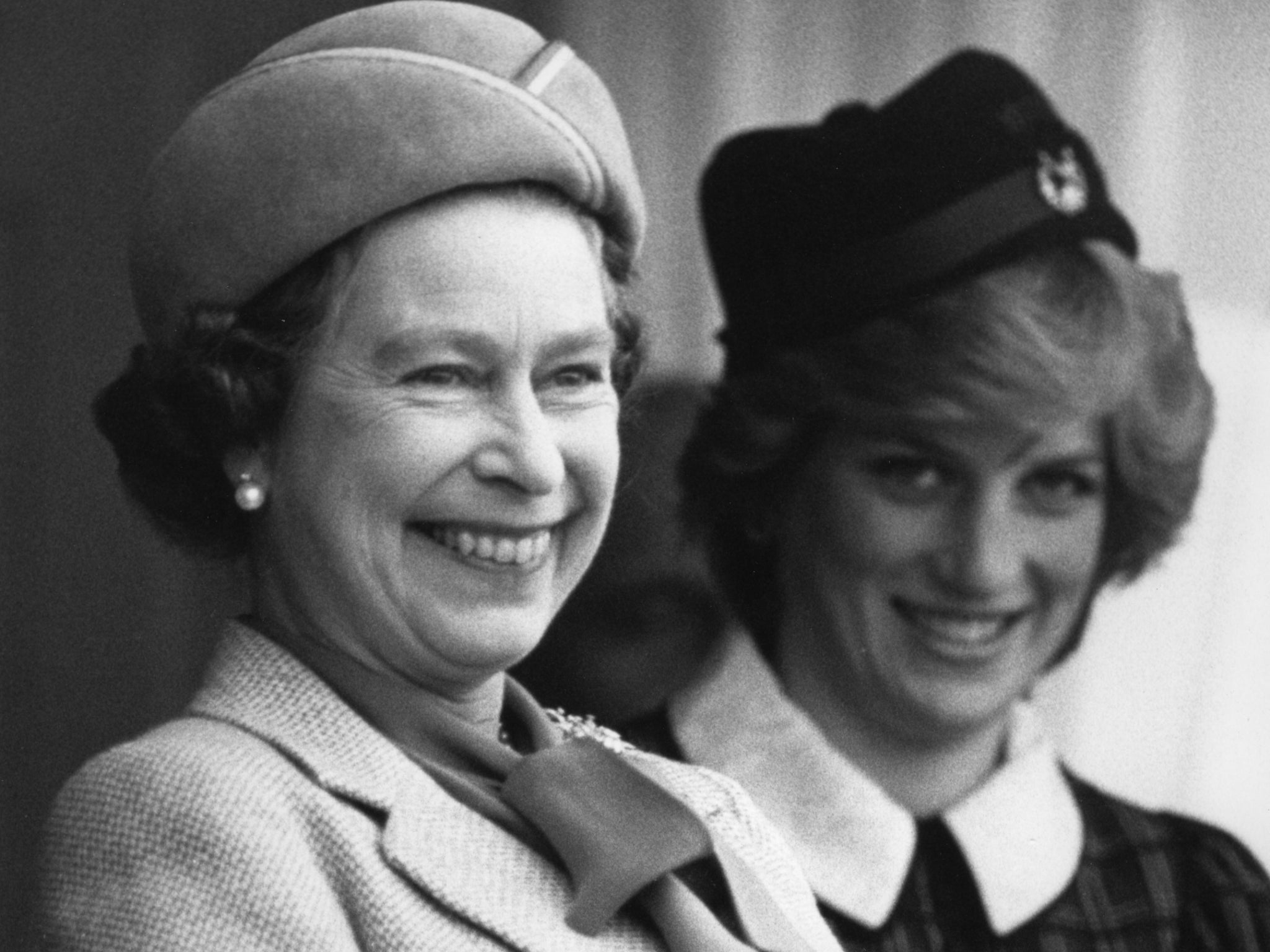What was the Queen’s relationship with Princess Diana like?
While complicated, it seemed the two shared a fondness for one another, writes Rachel Burchfield
Your support helps us to tell the story
From reproductive rights to climate change to Big Tech, The Independent is on the ground when the story is developing. Whether it's investigating the financials of Elon Musk's pro-Trump PAC or producing our latest documentary, 'The A Word', which shines a light on the American women fighting for reproductive rights, we know how important it is to parse out the facts from the messaging.
At such a critical moment in US history, we need reporters on the ground. Your donation allows us to keep sending journalists to speak to both sides of the story.
The Independent is trusted by Americans across the entire political spectrum. And unlike many other quality news outlets, we choose not to lock Americans out of our reporting and analysis with paywalls. We believe quality journalism should be available to everyone, paid for by those who can afford it.
Your support makes all the difference.Two of the most important figures in the modern era of the British Royal Family were Her Majesty and Diana, Princess of Wales – both beloved, adored, and globally renowned.
Upon her marriage to the Queen’s eldest son, Prince Charles, on 29 July, 1981, the then-Diana Spencer was a hopeful Queen consort. But cracks in the marriage soon emerged, and Charles and Diana separated in 1992 and divorced in 1996, just one year before Diana’s tragic, untimely death in a Paris car accident at age 36.
But what was the relationship between Diana and her mother-in-law, the Queen, like?
The Queen met Diana when Diana was a child
Diana’s family, the Spencers, always enjoyed a close relationship with the royal family. Her father was an equerry to the Queen, and both of her grandmothers had served as ladies-in-waiting to the Queen Mother. In fact, Diana’s grandmother, Baroness Fermoy, remained a close friend of the Queen Mother for decades.
Diana spent her early years living at Park House, situated on the royal family’s Sandringham estate in Norfolk. There she often played with Her Majesty’s younger sons, Andrew, born in 1960, and Edward, born in 1964 as Diana was born in 1961. Charles, more than 12 years her senior, was much older and therefore not a playmate of the young Diana Spencer.

Charles and Diana meet
Though surely the Prince of Wales and Diana had been in close proximity in earlier years, their first meeting of note was in 1977, when Charles was dating Diana’s older sister, Sarah. At the time, Diana was 16 and Charles was approaching 30. Charles and Diana connected at a grouse hunt, where the Prince of Wales made quite an impression on the teenager; for his part, he just remembers her as a jolly young girl.
Initially, the relationship between Charles and Diana was deeply encouraged by the royal family, and it began a few years later. Now, at 32, Charles was being pushed more and more to find a suitable bride and produce an heir and a spare. Diana was young and – per standards at the time – still a virgin, making her an ideal bride as compared to other women Charles had wooed, namely Camilla Parker Bowles, whom Charles had fallen in love with nearly a decade prior. After the family opposed the relationship and eventually caused Charles and Camilla to break up, Camilla subsequently married Andrew Parker Bowles, but remained close to the Prince of Wales.
Facing mounting pressure from his father, Prince Philip, and thanks to the Queen Mother and Baroness Fermoy’s matchmaking behind the scenes, Charles proposed to Diana in February 1981 after only seeing her romantically 13 times.
A fairytale it was not
Though their July 1981 nuptials was nothing short of a fairytale, it became evident quickly that Charles and Diana were not a love match and that Diana had little in common with Charles or his family. When they married, Charles was 32 and Diana was barely 20. The ever-brighter gleam of the spotlight did not help matters either, and heated arguments ensued between the newlyweds.
Palace insiders would later suggest that Diana turned to the Queen for guidance after marrying into the royal family, but these two women were drastically different. Her Majesty was committed to duty and service and was incredibly stoic, even with the closest members of her family. She was ill-prepared to deal with the emotionally vulnerable Diana. Diana sought emotional closeness that Her Majesty wasn’t able to provide her. As the cracks between Charles and Diana emerged, so did those between the Queen and Diana.

The marriage breaks down
Charles and Diana tried in earnest to repair their fractured marriage and did share some happy years surrounding the birth of their sons, William in 1982 and Harry in 1984. But not long after Harry’s birth, the cocktail of Diana’s celebrity led to burgeoning resentment on the part of her husband. Not only did Diana overshadow Charles, but she overshadowed the rest of the family, as well.
By the mid-1980s, both Charles and Diana were having extramarital affairs and, after the 1992 release of Andrew Morton’s bombshell book Diana: Her True Story – which was posthumously confirmed that Diana assisted with – the Queen and Philip arranged a summit to try to salvage the marriage.
Finally, at the end of 1992, the Queen gave her consent to, at last, allow the fractured couple to separate. In 1995, the “War of the Waleses” took to primetime, with both Charles and Diana appearing on separate television programmes spilling secrets of their private lives. In Diana’s much-maligned interview with Martin Bashir, she claimed she had received little support from the family during her marriage.
The Queen, despite her reluctance, wrote to both Charles and Diana that, after nearly four years, it was time to finalise the divorce. Her Majesty reportedly advocated for Diana to retain her Her Royal Highness title; Charles adamantly refused.
Diana’s death in 1997
One year and three days after she and Charles’ divorce was finalised on 28 August, 1996, Diana was killed in a high-speed car crash in Paris on 31 August, 1997. During the week that followed, the Queen was criticised for her seemingly ‘uncaring’ manor, but on the eve of Diana’s funeral on 6 September, the Queen delivered a live speech in which she praised her former daughter-in-law and broke with tradition and allowed the flag to fly at half-staff over Buckingham Palace on the day of her funeral. Her Majesty also bowed her head as Diana’s coffin passed by her during her funeral procession.

“There has been so much written incorrectly about the Queen being a bit of a dictator, demanding Diana behave a certain way,” royal correspondent Victoria Arbiter tells The Independent. “Diana and the Queen shared a warm relationship. The Queen found emotional problems difficult – that’s her generation.”
Her Majesty felt deeply for the level of press attention Diana garnered, including calling a meeting for newspaper editors early in Charles and Diana’s marriage, encouraging them to “lay off” Diana and leave her alone.
“All the meeting did was further galvanize the press,” Arbiter says. “She certainly gave [Diana] support behind the scenes and felt very fondly towards Diana, whom she had known since she was a little girl. Diana had tremendous respect for the monarchy and, by extension, the Queen.”

Join our commenting forum
Join thought-provoking conversations, follow other Independent readers and see their replies
Comments